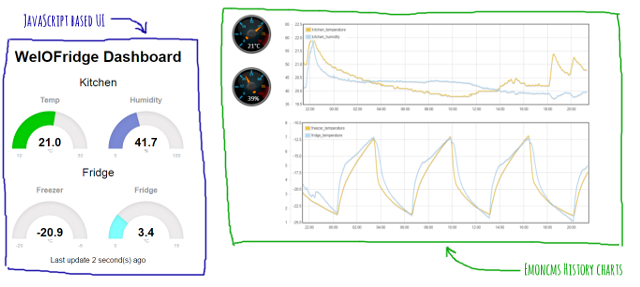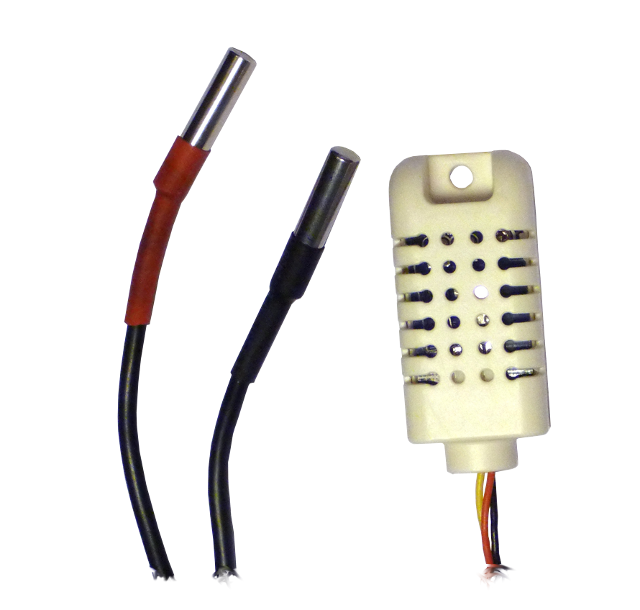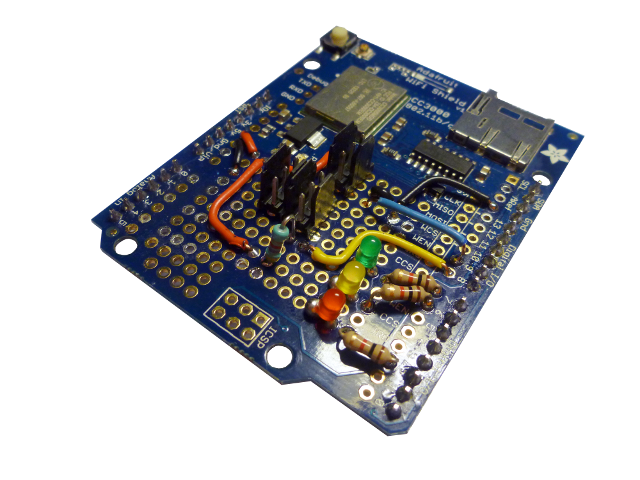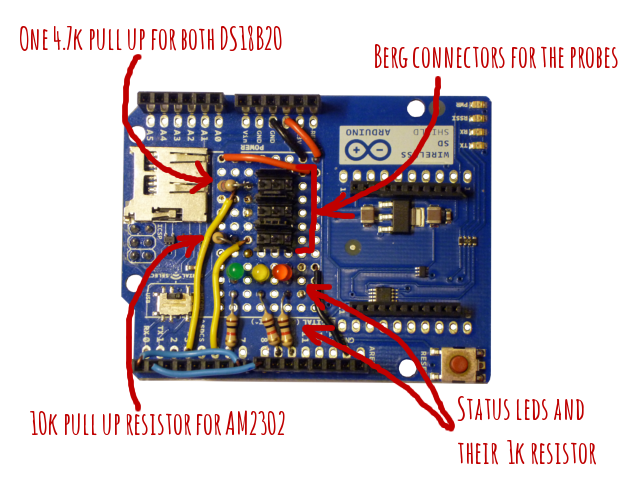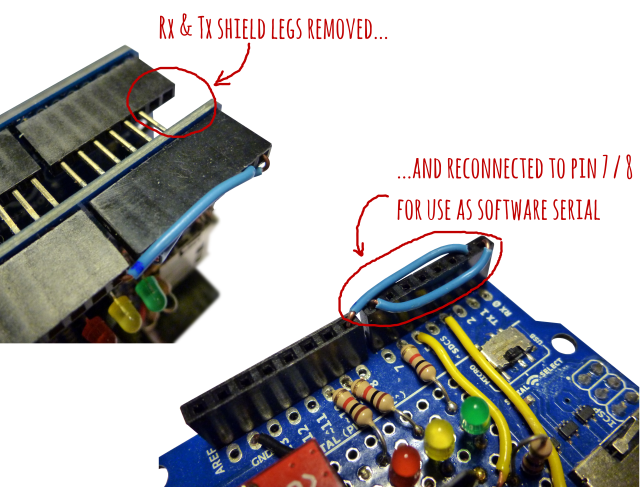Now that I have my WeIO, I thought I could try to “migrate” my WiFridge (which already worked on an Arduino UNO + WiFly board and an Arduino UNO + Adafruit’s CC3000 shield)
I tried to use a WiDo from DFRobots but it it based on an Arduino Leonardo and the bootloader being larger than for an Adruino Uno, I can’t get my program to fit in memory ! I’ll try a bit later to either get my code lighter or remove the bootloader and program the chip directly.
So for now, I’ll just try to leverage WeIO power to get a new version of my WiFridge : the WeIOFridge !
I had first to connect 2 DS18B20 which are going into the fridge and freezer. But there is no direct support for it so I used a workaround described here : use the UART to “simulate” 1-wire protocol. At the time of writing, a new version of WeIO software should be out in a few days which is including all necessary librairies and a little helper to simplify the use of DS18B20 on UART port.
Then, I tried to connect a DHT22 for kitchen temperature and humidity… and got some troubles. But thanks to the help of WeIO team (see posts here and here), we finally managed to get it working. As for DS18B20, update for this will be included in next WeIO software which should be out soon.
And after a bit of coding
- in Python for the server side : reading data from the sensors, and sending them to a private emoncms web site and any connected Web client
- in JavaScript for a nice Web UI displaying instantaneous data
I now have this :
I am now stabilizing my code (still a few glitches…) and in a next post, I’ll describe the hardware connections and associated programs.

